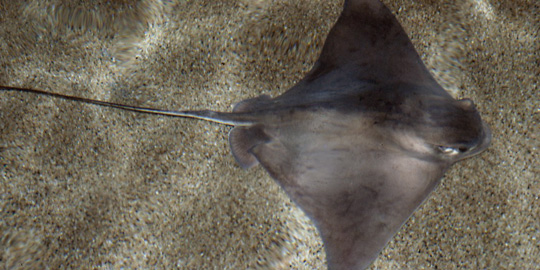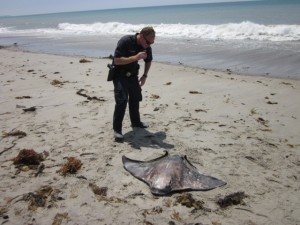Bat rays swim gracefully by flapping their batlike wings (pectoral fins) bird style—a feature that gives these rays their common name and their family name, “eagle rays.” They are found in muddy and sandy bottom bays, kelp forests and close to coral reefs.
Those batlike wings also serve in the hunt for food. Bat rays flap their pectoral fins in the sand to expose buried prey, like clams. Rays also use their lobelike snouts to dig prey from sandy bottoms. The resulting pit can be up to 13 feet (4 m) long and eight inches (20 cm) deep—an important source of “leftover” small prey for fishes that can’t dig. Bat rays have one to three venomous barbed spines at the base of their long tails, but these docile animals sting only to defend themselves.
Bat ray found on the beach at Doheny





